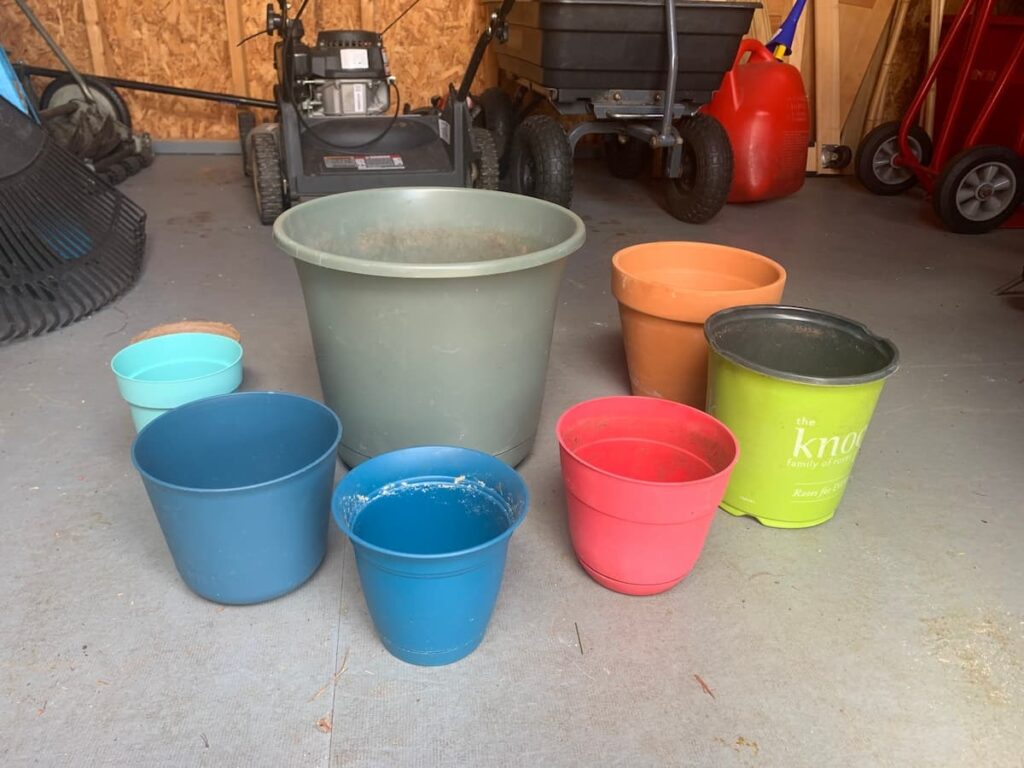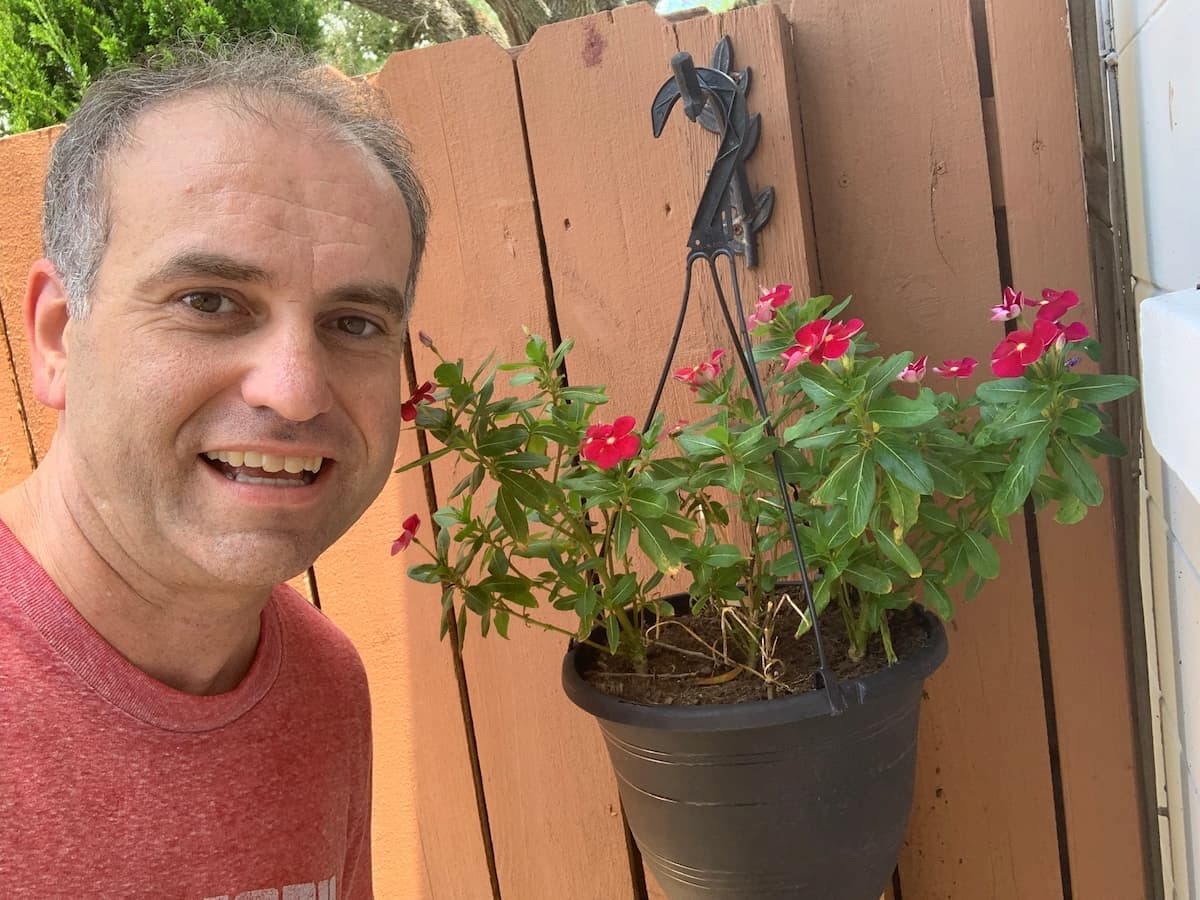I wish I had followed more tips for potting plants when I was younger. I made my fair share of mistakes, often because I lacked the knowledge at a younger age or was just trying to save a buck. And while I usually had a preference for landscape gardening, I have a great deal of appreciation for container gardening and potted arrangements, too.
I don’t know about you, but I think pots are one of the greatest inventions in gardening… They allow you to have a plant almost anywhere you want to grow a one. On a downtown apartment rooftop or patio. On a suburban deck or porch. Even inside the house!
Pots also allow us to grow plants where Mother Nature doesn’t necessarily want us to grow them. Consider, for example, potted palms on Cape Cod that can be enjoyed outside during the region’s balmy summer and brought into a solarium for the frigid Massachusetts winter. You could also pot seasonal flowers or other plants that attract pollinators to beautify hardscaped areas of your property, like perhaps the front entryway or other paved areas around your home.
But if there’s one thing I learned in my years of gardening, it’s that successfully raising potted plants takes a little know-how and finesse. I’ve certainly discovered this the hard way!
5 Tips For Potting Plants
Straight from my portfolio of trial, error, and success, here are my five tips for potting plants…
Plant Potting Tip #1: Use A Pot Of The Correct Size
If you’re starting a plant by seed, it’s usually best to give it a home in a small pot – maybe one that’s just a few inches in diameter. It’ll need a little room to get a nice little root ball going before being transplanted into either the ground or another (larger) pot.
The ideal size of a pot for a plant that’s already potted is generally 1 to 2 inches wider and deeper than the root ball. You don’t want the roots to be touching the inside of the pot because then they will start wrapping around the root ball and becoming overcrowded.
If you’re transplanting a plant from one pot to another, the new pot should be at least 2 to 4 inches wider and deeper than the root ball, providing plenty of room to grow – faster-growing plants may need even more space.
Now, this isn’t necessarily a one-size-fits-all approach to choosing pot sizes. Creeping groundcover-type plants may need wider but shallower pots than suggested here, while those who grow potatoes or carrots will want deeper pots that will give those tasty root vegetables a good 12 inches or more to dig into the soil.

Plant Potting Tip #2: Ensure Your Potted Plant Has Proper Drainage
Plants like plenty of room to grow. But do you know what many of them don’t like? Soggy bottoms!
Plants generally need good drainage, and that’s why it’s a good idea to create a place for water to wick away so the roots aren’t sitting in a puddle of water. This assumes the pot already has drainage holes. If not, be sure to drill some through or near the base to ensure water can escape the pot.
Adding gravel, pebbles, or even chips of broken pottery at the bottom of the pot can help implement ample drainage in your pots.
Plant Potting Tip #3: Use Potting Mix
There was a time when I thought the soil from my yard was good enough for potting my plants. Guess what? I was wrong!
My Central Florida yard has patches of land that are either more sandy or more clayey, and I tended to get a lot of weeds popping up in the pots I had filled with my property’s native soil. I eventually resigned myself to the fact that the best soil for my potted plants was potting soil, which you can buy in bags from your local nursery or home store.
Believe me, it’s worth the cost. You know what you’re buying is good, balanced soil that should be free of weed seeds, diseases, and pests.
Plant Potting Tip #4: Make Sure You’re Watering Your Potted Plants Just Enough
What’s one of the best tips for potting plants? Don’t over-water them! And here’s another piece of sage advice: make sure you give your potted plants enough water.
You see, potted plants tend to dry out much more quickly than identical plants in similar areas of a yard growing in the ground. Knowing when to water your potted plants often comes down to testing them; one of the most obvious signs your plant needs water is if the leaves are shriveling up.
Another way to check for when to water is to stick your finger in the soil about an inch or so and make a determination that way — if the soil feels dry or compacted, it’s probably time to water; if the soil seems moist and some of the soil sticks to your finger once you’ve removed it, the plant shouldn’t need any water at the moment.
Plant Potting Tip #5: Choose A Good Fertilizer
While potted plants don’t necessarily need fertilizer, it usually doesn’t hurt either. So, which kind do you buy? There are seemingly a thousand varieties on the shelves of the big-box department stores. Some are suited to specific types of plants, but there are two kinds I personally swear by because of the success I’ve had with them.

One of them is Miracle-Gro, which I began using in 1990 and have never failed with when I used this popular plant food with the right frequency and quantity. It’s a good, general, all-purpose type of fertilizer that is time-tested, easy to use, and offers a good blend of nutrients for a wide variety of landscape and potted plants. I still use Miracle-Gro for my outdoor plants.
Indoors, I have found Jobe’s fertilizer spikes to be a tidy solution for providing potted plants with a good, slow-release mixture of nutrients right near the base of the plants where they need it – at the roots.
Let me also take a moment here and say that as of this writing in June 2024, I have no financial, sponsorship, or compensation interest of any kind with Miracle-Gro or Jobe’s. These are my own suggestions based on my long-time experience in actually using these brands of fertilizer and plant food. They may or may not work for you, but I have found they provide successful solutions for helping to keep my plants alive, well, green, and growing!

2 responses to “My 5 Favorite Tips For Potting Plants”
In your step #2, is it necessary to put drainage holes so that one doesn’t drown the plant?
Great question! Yes, it is. While the assumption is that most pots come with holes pre-bored, you will need drain holes to accomplish true and effective drainage. Therefore, I suggest drilling a few drain holes into or near the bases of any pots that don’t have them but are housing plants that need drainage.